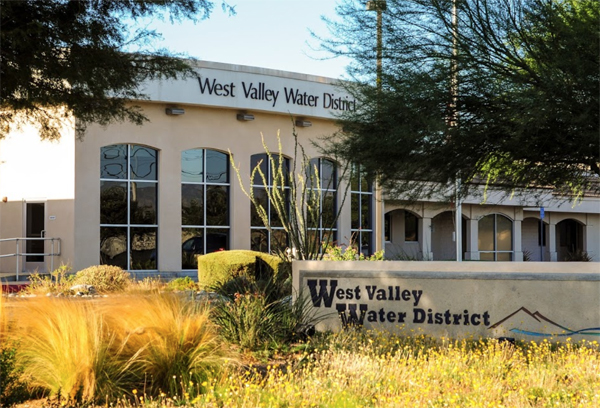West Valley Water District announces ambitious water filtration facility expansion
3 min read
Due to unprecedented population growth and rising peak summer usage, the West Valley Water District (WVWD) announced that it will expand treatment capacity for the region by 16 million gallons per day through the ambitious Oliver P. Roemer Water Filtration Facility Expansion Project.
WVWD selected GHD Inc., a global infrastructure engineering firm with extensive treatment facility experience, to assist with the planning and construction of the Roemer expansion project. GHD Inc. will analyze existing facilities, evaluate expansion plans for feasibility and cost-effectiveness and assist in the selection of a design-build firm.
“We want to make sure that our Water District is set up for long-term success. With water safety and sustainability as our top priorities, this new project will ensure that our ratepayers have clean, safe water for decades to come,” said WVWD Board President Channing Hawkins. “GHD is a leader in environmental infrastructure engineering and this project couldn’t be in better hands.”
Ranked 25th on Engineering News-Record’s ranking of top 500 design firms in 2019, GHD is a global leader in infrastructure engineering with more than 10,000 employees and 200 offices worldwide. With offices in Los Angeles, Moreno Valley, Long Beach, Irvine and San Diego, GHD has a distinguished history of working with municipalities and local agencies in Southern California since 1951.
In recent years, GHD has been awarded $1.3 billion in infrastructure projects in Southern California alone. The firm recently completed the Water Replenishment District’s Groundwater Reliability Improvement Project (GRIP) in Southern Los Angeles County and is working on the Doheny Ocean Desalination Plant Project in South Orange County and Arcadia Water Treatment Plant Expansion Project for the City of Santa Monica.
For WVWD, GHD will:
- evaluate the existing Roemer facility and provide recommendations for system rehabilitation, replacement and redundancy
- conduct a functional stress test of the existing Roemer facility to assess the plant’s maximum operational capacity
- conduct an environmental review of the project
- assist in preparing and submitting permits
- develop 30 percent of design documents under a progressive design-build delivery model
- prepare a probable construction cost estimate based on the initial design
- prepare the project implementation schedule and a potential phased project construction timeline
- assist in advertising, obtaining and reviewing proposals and the selection of a design-build firm
The project will more than double the Roemer facility’s treatment capacity and is necessary to help restore groundwater levels. Treatment capacity expansion will ensure that WVWD can continue to process enough water to meet the region’s growing water needs. Currently, the Roemer facility provides 41 percent of WVWD’s water and uses both Lytle Creek and the State Water Project (SWP) water to meet local demand. The other 59 percent of WVWD water is secured via ground wells. By increasing the Roemer facility’s ability to treat water from SWP, which carries water from Northern California south to the Inland Empire, WVWD can reduce ground well utilization and allow groundwater levels to recover.
The Roemer facility was constructed in 1995 to treat Lytle Creek surface water and was upgraded in 1998 to increase treatment capacity from 7.2 to 9.6 million gallons per day and allow the facility to treat both Lytle Creek water and purchased SWP water. In 2006, the facility was upgraded to handle 14.4 million gallons per day. These improvements included the addition of ultraviolet disinfection, advanced pretreatment for turbidity removal (coagulation, flocculation, and sedimentation), an influent open-air blending pond and a granular-activated carbon removal system. The current expansion project will grow water treatment capacity by 16 million gallons per day and integrate additional water treatment technologies to ensure there is more than enough clean and safe water for generations to come.







